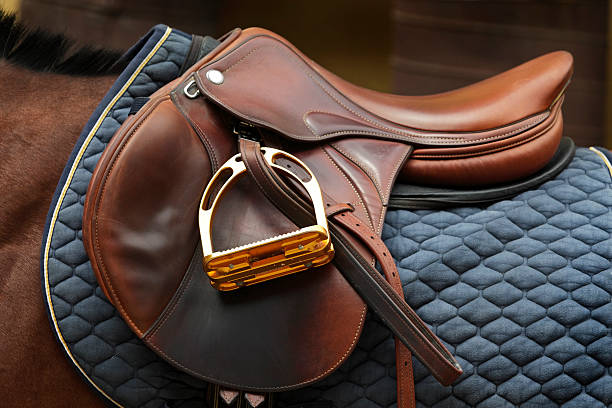
What is Horse Tack and Why is It Essential for Your Horse?
Share
For anyone involved in the world of horses, what is horse tack is a fundamental question. Tack refers to all the equipment used in riding and handling horses, playing a pivotal role in how riders interact with their equine companions. Whether you are a seasoned equestrian or a new horse owner, understanding the significance of horse tack is essential for your horse's health, comfort, and performance.
Not only does proper tack help in effective communication between horse and rider, but it also ensures safety during riding. Choosing the right equipment can make a considerable difference in making your horse feel comfortable and secure. In this article, we will delve deep into the aspects of horse tack, types, maintenance, and its importance for health-conscious pet owners.

Types of Horse Tack: An Overview
Horse tack can be classified into various categories, each serving unique functions. Here are the main types of tack you should be aware of:
1. Saddles
One of the most recognizable items of horse tack is the saddle. There are several types, including:
- English Saddles: These are lightweight and allow for better communication between horse and rider.
- Western Saddles: Heavier, designed primarily for ranch work and equipped with features for comfort.
- Endurance Saddles: Built for long-distance rides.
2. Bridles
The bridle is another critical component that helps in controlling the horse. It consists of:
- Headstall: The part that goes over the horse's head.
- Bit: The metal piece sitting in the horse's mouth promoting communication.
- Reins: Used by the rider to signal the horse.
3. Girths
Girths are used to secure the saddle to the horse's body. They come in various materials and sizes, designed to keep the saddle from slipping during riding.
4. Horse Boots
Horse boots protect the horse's legs from injuries and are essential for health-conscious riders. They are available in styles such as:
- Front Boots: Usually provide support and protection from abrasions.
- Fetlock Boots: Protect the fetlock area during jumping.
- Brushing Boots: Help prevent cuts and bruises from branches and debris.
Why the Right Tack is Essential for Horse Health
Using the suitable tack for your horse goes beyond comfort; it has implications on your horse's long-term health. Consider the following:
1. Comfort and Fit
Improperly fitted tack can cause discomfort or even injuries to your horse. Strange pressure points can lead to pain, making the horse reluctant to perform or even causing significant harm over time. Regular checks and suitable adjustments are necessary.
2. Effective Communication
Good tack allows for effective communication between the rider and the horse. The horse should be able to respond well to the rider's cues, promoting a harmonious partnership.
3. Safety
Safety is a paramount consideration. Poorly maintained or unsuitable tack can lead to accidents. Always inspect your gear before riding to ensure everything is in working order.
How to Choose the Right Horse Tack
Choosing the right horse tack involves several factors:
1. Consider Your Horse's Size and Shape
Every horse is unique, and choosing tack that fits correctly will contribute greatly to comfort and health. Measure your horse's dimensions before making any purchases.
2. Think About Your Riding Style
Your riding activitybe it dressage, jumping, or trail ridingwill dictate the type of tack you need. Research the specific requirements for your discipline.
3. Quality over Price
While budget constraints are real, investing in high-quality tack will pay off over time. Look for durable materials and solid construction.
Maintaining Your Horse Tack
Proper maintenance is essential for the longevity of your tack. Here are some tips:
1. Clean Regularly
Dust and dirt can accumulate quickly, so clean your tack regularly with designated saddle soap and conditioning treatments.
2. Store Properly
Avoid exposing tack to direct sunlight or moisture, as these can degrade the materials. Use breathable bags or racks for storage.
3. Inspect for Damage
Before every ride, check for any signs of wear, such as frayed straps or rusty metal parts. Replace damaged equipment promptly to ensure safety.
Conclusion: The Importance of Understanding Horse Tack
As health-conscious pet owners, understanding what is horse tack can significantly impact the quality of life for both your horse and you. A thoughtful approach to choosing and maintaining horse tack promotes effective communication, comfort, and safety, ultimately fostering a better horse-rider relationship.
For further readings, you may also check out resources like choosing the right tack, or delve into what horse tack entails.

FAQs
1. How often should I replace my horse tack?
It depends on usage and condition. Regularly inspect your tack; replace any items that are worn or damaged.
2. Can I use English saddles for Western riding?
While it's not recommended due to fundamental design differences, it's possible for casual riding if both horse and rider feel comfortable.
3. How should I clean leather tack?
Use a quality leather cleaner and conditioner, washing off dirt and grime to maintain its suppleness.
As an Amazon Associate, I earn from qualifying purchases.
